-
Posts
4,741 -
Joined
-
Last visited
-
Days Won
119
Content Type
Profiles
Forums
Resource Library
Events
Gallery
Blogs
Store
Community Map
Posts posted by Mayner
-
-
Checked out Hankinson interchange with the CP and regional/shortline Dakota Missouri Valley and Western in the hope of seeing CP,DMVW or RRVW power.
The DMVR interchange and an Ethanol plant are the main sources of originating and terminating traffic at Hankinson.

CP GP38-2 4406 switching at the East end of Hankinson yard. Switch crew member operating hand operated switch using a classical vertical switch stand. Ethanol plant in the background receives grain by road and rail and dispatches ethanol mainly used in motor gasoline (petrol) with its own switch locomotives.
4406 coupled up to a cut of cars in Hankinson Yard.

Recently re-sited Hankinson Depot . The Depot was re-located from its original location to a public park in 2003 and recently relocated to its downtown location top help bring life back to the main street. https://www.wahpetondailynews.com/news_monitor/news/soo-line-depot-returns-to-downtown-hankinson/article_1ca557c4-35b8-11ec-b20c-378a40a9b509.html

CP GE ES44AC (Evolution Series) leads an eastbound bound (105) car grain train through Hankinson. The west end of Hankinson is a challenging place to compose a picture as the line curves from an east-west to a north west direction.

Although mainly CP some interesting 'fallen flag' cars in the train as a result of acquisitions. DME (Dakota Missouri and Eastern) was a short line acquired by the CP during the early 2000s to reach the Powder River Coal Field in Wyoming.

Kansas City Southern at first glance surprising. Canadian Pacific Railway and Kansas City Southern became Canadian Pacific Kansas City or CPKC following the recent merger of the two companies forming a single railroad connecting Canada, the United States and Mexico.
Went on to Beckenridge with a considerable number of RRVWR and BNSF locos at the motive power depot and the yard lead and a very full yard.

2-GP38-2 & 1 SD70 in the RRVWR loco service area.

Line of operating and stored power

4-BNSF GE Units and 1-RRVW SD70 on the yard lead awaiting their next turn.


Trackmobile positioning cars for loading Beckenridge. Traditionally harvest season/Autumn was peak time for shipping grain from the growing areas to the mills and ports. With increased storage capacity (on and off farm) growers and elevator operators have the capability to store grain and wait until the price rises! As technology changes agriculture in the mid-west became largely corporate with vast farms and few remaining family farms.

As I neared home I caught sight of an approaching CPKC train.

The train consist appeared familiar right down to the KCS cars, I was the same train that I saw over two hours earlier 40 miles away at Hankinson! Its possible that the train may have been held to allow more urgent traffic to overtake or cross westbound traffic at crossing places en-route.
-
 8
8
-
 1
1
-
-
1 hour ago, jhb171achill said:
Hornby were doing their own six-wheelers, of much the same design; in fact, one of the hattons folks suggested to me that hornby had "stolen their idea". I
Thus, might there be some mileage in the two - rivals though they were in regard not only to six-wheel carriages, but other things too - combining forces on this one?
It seems to me that should there be any merit in the above, Hornby would be a logical successor. No point in an Irish manufacturer taking this up.
Its just about possible IRM or Accurascale are the contract manufacturer for the Hattons 6-wheelers, Accurascale took on the Hattons Class 66 tooling in 2022 upgraded the model and incorporated it into the Accrascale range.
Stephen's recent posts indicate that IRM have insider information on the state of manufacture of the Hattons coaches.
If an Irish manufacturer controls the Hattons 6-w tooling their is every point in retaining and using the toolings and adding to the bottom line potentially cross-subsidising the manufacture of marginally profitable or loss making Irish models.
-
 4
4
-
 2
2
-
-
1 hour ago, raymurph said:
Thanks Murphaph. What about the composite coach for the 4 car rake instead of the first?
A Composite would be an option. Most if not all Composites (I would need to check) were re-graded as Standard Class during the late 70s/80s when CIE ended up with a shortage of MK2D Standards and a surplus of Composites when CIE decreased train frequency and increased train length following the 1st 1970s Oil Crisis.
As far as I recall the Dublin-Rosslare and Dublin-Sligo trains were standard Class only and relatively short (5-6 coach length) when CIE 'cascaded" MK 2D coaches to both routes following the introduction of MK3 Coaches during the Mid-1980s.
Four coaches behind a 001 or a pair of 121 Class would be a reasonable representation of a Dublin-Rosslare or Dublin-Sligo train, or the 001 worked afternoon Heuston-Waterford which was a Standard Class MK2D link during the late 80s early 90s. (I took a series of photos of the train still in the CIE Supertrain scheme near Cherryville Junction in 87-88
The CIE Enterprise and other the Heuston Coach MK2D links tended to use longer rakes.
-
 4
4
-
 2
2
-
-
From the land of the Ice and Snow not quite from the Midnight Sun or Hot Spring s flow.
Its said that the Norsemen explored and traded in what is now Minnesota and North Dakota before their descendants settled the region with the building of the Northern Pacific and Great Northern, the Norwegians were used to extreme cold and the great plains were a lot easier to farm than their homeland.
The wife is of Viking and Germanic descent so off to Beckenridge this afternoon for groceries including 'Lefse" Norwegian potato flatbread and some elevator/train spotting!
No traffic on the CP line near Tenny. Busy loading and drying grain for the next rail shipment, a "high rail" excavator was working on the CP line just east of the elevator, so on to the BNSF line towards Beckenridge.

Another South/East bound BNSF Unit Grain approaching Campbell. Although the signals were not illuminated at Campbell, I could see a headlight approaching slowly in the distance and had time to pull off the highway at a grade crossing of a country road. In the US colour light signals only light up as a train is approaching and normally dark.

Too cold and long to bother counting the cars!

Trailing loco with footprints in the snow!

Beckenridge in the snow. BNSF locos likely to e waiting for RRVW to complete making up a train for departure. Crete River SW was parked outside loco shop last week, long string of freight cars also parked on BNS siding (crossing loop).

Beckenridge RRVW Office Loco Shop looking East. Switch crews (human shunters) use pick up trucks to drive around yards while making up and breaking down trains, in New Zealand and Australia shunters use Utes (scaled down local version of a pick up truck!)

Beckenridge Depot with mandatory stuffed and mounted caboose on right, Roundhouse on right. There appears to be plans to restore the depot as a museum, the Roundhouse is industrial use, tracks on left are used by RRVWR PW dept. Hand operated switch on BNSF siding/passing track main line on right.

Red River of the North at confluence of Bois de Soiux and Otter Tail Rivers. Both Native American and Scandinavian tradition hold that the Vikings sailed down the Red River from Hudson Bay, later followed by French and British Trappers and the Soiux moved westward onto the plains later followed by European settlers mainly from Scandinavia and Northern Europe lured by the promise of fertile land and a mild climate

-
 10
10
-
-
Just part of the contraction of retail from the high street shop to the retail park to the giant out of town "Fulfilment Centres" and direct sales from manufacturer to customer cutting out the middleman.
Hattons are not the first large model railway mail order house to go to London institutions W & H (Model Railways) New Cavendish St and Model Railway Manufacturing (Kings Cross) both stocked a wider variety of rtr and kits than Hattons both went out of business during the early 90s although they traded successfully for many years. Both were regular haunts when I lived in London in the late 80s W&Hs business seemed to be mainly mail order, while the Kings Cross shop was usually crowded with customers on a Saturday.
Fundamental change in the hobby during the last 30 years, British outline rtr was dominated by Hornby with Lima the primary competitor as retailers struggled to clear unsold large stocks of Mainline/Airfix/GMR locos/coaches and wagons in stock since the late 70s. Bachmann had not yet made its entry to the UK market with re-tooled Mainline locos and stock.
30 years ago Murphy Models and IRM producing accurate models of Irish locos and stock would have been considered a pipe dream, let alone several rtr manufacturers and commissioners competing for the British outline merket.
-
 8
8
-
-
Changing times a good example of management having the foresight 'to get out while the going is good" with reduced market share as an increasing proportion of customers buy on line from the manufacturer and increased overheads (commercial rates and accounting for VAT on EU & overseas sales).
The expectation for retailers to account for VAT/GST on overseas sales as a result of tax harmonisation laws intended to recover loss in VAT revenue from overseas on-line sales, may have been a greater factor than Brexit. Tax harmonisation laws rather than Brexit lead to the Irish Revenue and An Post upgrading their IT systems in order to collect VAT on relatively low value imports which previously cost more to collect than they earned in Vat, we had a similar system in New Zealand where Customs did not collect VAT/GST on items below a certain value. One of our local specialist model railway retailers used to complain bitterly about modellers buying models direct from overseas without paying tax!
I seldom bought from Hattons as they were a bit too mainstream for my interest tending to by the occasional rtr item or detail parts from Rails. The closure of Hattons is more a symptom of change in the model railway hobby as a result of the greater shift to Far Eastern RTR manufacture and direct on line sales by Manufacturers and Comissioners that has largely contributed to the demise of small specialist manufacturers and the specialist 'model railway shop'
Locally hobby shops only stock Hornby and Peco the majority of British outline modellers source their models direct from the UK, American outline modellers from the States.
"Interesting times" as they say
-
 3
3
-
 2
2
-
-
Irish whitemetal kits have largely been superseded by resin (Provincial Wagons) and 3 D printing.
A simple wagon kit is probably the best starting point, before tackling a complete a loco or coach.
JM Design
My CIE 25436-25893 series flat wagon kit (set of 3) would be a good starter for etched kit assembly, fold up construction with minimal soldering.

Dart Castings/MJT can supply whitemetal buffer and axlebox castings, I can supply cast brass springs.
Supplied to order from PPD in Scotland, I will need to check pricing.
Studio Scale Models
Website appears to be down.
Produced a brass fold up kit for the CIE 30T Brake Van and very some very nice whitemetal kits for.
1. Irish Standard Open Wagon used by GSR/GNR/CIE
2-3. GSWR & MGWR 'soft top" Convertible Wagons
-
 2
2
-
-
19 minutes ago, leslie10646 said:
Ah yes, EVENTUALLY! 2025/6!
BosKoney (Stephen) has stated that there are two steam projects for 2025/6 which will be revealed once they have reached an advanced point when Engineering samples / prototypes (*EP's) are in hand during 2024.
Based on IRMs track record for accuracy they likely to be locos that they could physically measure/scan, there is too much guess work involved to produce a model from surviving CIE/GSR diagrams, very few detail drawings of CIE steam locos survive.
Interestingly the RPSI scanned their loco fleet about 15 years ago in the expectation that a rtr manufacturer would produce models of some of their locos.
-
 5
5
-
 2
2
-
 1
1
-
-
I have updated the website to provide greater clarity around our Kits and RTR Wagons jmdesignmodelrailways.com.
Due to the relatively low level of demand and high production costs our models are available as pre-order items as opposed to stock items.
One of the advantages of 3D printing is that our suppliers have no minimal order quantity for a particular model unlike plastic injection moulding or resin casting, thus its feasible for me to include a several different types of wagons in an order to our printers at a similar unit cost to an order for one type of wagon.
This basically means that our 2 Varieties of 20T Brake Van, 4 Varieties of Covered Wagon, Open Wagons will be continuously be available from stock or pre-order as long as the business continues to operate.
Kits. I have finally gotten round to using the 'k' word after using CKD for a couple of years. Our wagons are closer in concept to the Triang-Hornby coaches of the 60s and 70s where everything bolted or clipped together or the American "shake the box kits" rather than conventional kits which sometimes take considerable skill and time to assemble.
The CKD kits fit together with minimal cleaning up or preparation apart from moving excess supports (tiny pieces of plastic) that may be attached to the print. The design is not unlike a typical plastic injection moulded wagon, the pewter weight fits into a rebate in the floor of the chassis, the body can be secured to the chassis with a small blob of superglue near each end. Newly printed 3D parts sometimes distort during 'clean up' at the printers or handling, but will return to their normal/correct shape when immersed in hot but not boiling water.
RTR wagons
I expect to resume producing all available wagons in RTR form from March 2024 when our print suppliers return following the Chinese New Year. Models produced will depend on total 'numbers' (ideally 15-20 wagons) of pre-orders received as opposed to minimal orders for a particular wagon. There is no problem in slotting in 1 or 2 LMA's or GSWR Vans within a larger batch Brake Vans, Opens and CIE Vans
-
 4
4
-
-
2 hours ago, Rob said:
Well done all round- on the fantastic display and the work for the cats


We have four cats one rescue and 3 strays at home in New Zealand and 2 one rescue and 1 wild Tom in North Dakota. Family had taken pity and began feeding the Tom during the winter months and now had his own door and bed in the garage.
-
 2
2
-
-
4 hours ago, patrick said:
Any plans to do the grain hopper again John?
Will need to carry out some relatively minor tweaks to the CAD work before re-releasing the Grain Hopper.
Our supplier has been struggling to produce consistent prints of the hopper body with a high reject rate.
-
 2
2
-
-
Couple of days later went to Whapeton ND to stock up on groceries and diy supplies (installing a cat door) and checked out the rail yard in the twin-town of Beckenridge MN before returning home by Tenney. Temperature had dropped a few degree and wind-chill increased so not really weather for standing around.

Beckenridge the headquarters and operating base of the Red River Valley & Western. The city of Beckenridge is on the eastern bank of the Red River of the North which drains the Valley area of ND an MN. The tracks in the foreground are the BNSF main line and siding (crossing loop), the RRVW Loco Shops and Offices single storey buildings in left background. BNSF/RRVWR yard lead in the background between the loco spur and elevators. A lot of older RR infrastructure survives at Beckenridge including the former Great Northern Depot Building and Roundhouse.

Looking the opposite direction East towards Aberdeen Line Junction and Minneapolis. The elevators in the distance is Red River Grain a Shuttle Elevator served by a tennis racket shaped balloon loop with a separate connection to the BNSF line https://local.echopress.com/breckenridge-mn/red-river-grain-co-218-643-3738

The RRVWR started out in the late 1980s with ex ATSF CF7 locomotives. Santa Fe re-builds of 1940s Cab Units as road switchers passed on in turn to Short Lines, some were used for switching elevators after CF7s were banned from road use when locos failed to meet cab crash worthyness requirements.

For many years the mainstay of RRVWR motive power was its fleet of Caterpillar powered GP20-C locos 1980s Generation II locomotive of former BN GP20s. The Caterpillar locos produced distinctive dark clag when accelerating.

A pair of 2000HP EM GP 38-2 arrive with the Hankinson Job. The train includes laden bulk power cars from a flour mill at Fairmount and tank cars from an Ethanol plant at Hankinson on the CP Line, together with grain cars. The RRVWR serves industries and towns on the CP line as a result of a 1950s trackage rights arrangement when the Great Northern abandoned 30-40 miles section of line that ran parallel to the SOO later CP line.

The latest addition to RRVWR motive power are a number of former BNSF SD70 units. Useful for hauling 100+ car Unit Grain Trains from shuttle and larger elevator complexes to the BNSF interchange.
Tenney. Passed Tenney on the way home, grain trucks still arriving an drier operating but not a freight car in sight. It looks like the elevator loaded and dispatched a train between Tuesday afternoon and Thursday morning!
-
 8
8
-
-
3D printed wagons.
I have updated the website to reflect current stock levels of RTR wagons and pricing and availability of CKD wagons.
I expect to reduce our lead time for fulfilling orders for CKD wagons to 6-8 weeks from March onwards once our printers resume production following the Chinese New Year.
We are planning to supply both the planked and sheeted ducket version of the CIE 20T Brake Van, all four versions of the GSWR/GSR/early CIE covered vans and the GSR/CIE Standard 12T (Wooden Bodied) Open Wagon. The Open Wagon can be supplied separately for modellers who want to fit 'an Irish Chassis" with its distinctive single lever brake gear to a Dapol or Hornby open wagon body.
https://jmdesignmodelrailways.com/
New models for 2024.
I am currently working on a set of scratchbuilers parts for 60 Class or D14 loco and will probably follow up with a ex-MGWR Standard Goods in GSR form with superheater boiler if anyone is interested.
Both locos are on my long term wish list, though I have no plans at this stage to produce a kit or batch built rtr model of either type, from my experience with the JM Design GSWR 52 Class and MGWR 2-4-0 the numbers simply don't stack up.
-
 5
5
-
 2
2
-
-
16 hours ago, minister_for_hardship said:
A 4-4-0 or 2-4-0 wouldn't have both pulling power and speed to have max bums on seats and not hold everything else up on a modern railway. Something like a go most anywhere, modestly sized new build 4-6-0, perhaps a version of the 400 or 500 class. The new build Mogul may be a good compromise.
CIE produced a proposal for a 372 Class 3-cylinder mixed traffic 4-6-0 in 1945, technically a re-build of the Woolwich moguls the new locomotives would have been basically a 3 cylinder version of the successful 500 Class. Presumably the 3 cylinder layout with lower "hammer blow" would have resulted in lower track maintenance costs and allowed wider availability compared to the 2 cylinder Woolwich, 400 and 500 Class with their large outside cylinders.
Personally I think a second WT would have been a better option for the RPSI from an operational perspective than a Mogul as a new locomotive, but would not have the same emotional appeal for enthusiasts and fund raisers.
The GSR Locomotive Drawing Register was prepared by the authors of GSR Locomotives a reliable source.
-
 4
4
-
-
Some trainspotting during New Year family re-union in South East North Dakota, a lot warmer (hovering around freezing) for this time of year and no snow so far!
Re-tracing my former stomping ground on the CP (Soo Line) & BNSF (BN formerly GN) lines in SW Minnesota.

Tenney. Not much sign of life apart from a cloud of steam from the Wheaton Dumont Co-Op elevator and a long string of grain cars indicated that the elevator was in operation receiving grain for dispatch by rail on 2nd January 2024. Tenney formerly the smallest city (population 6) was unincorporated as a city by a vote by the 5 remaining residents in 2010 and abandoned the remaining buildings re-sited or removed, view is from the "town side" of the elevator. I took a photo of the Tenney Pop 6 sign and 6 birds on a wire 20 years ago.

Grain cars as far as the eye can see. On yard track alongside the CP Line from Minneapolis to the Canadian Border at Portal.

Loaded and empties: Cars are often switched by a Loading Shovel owned by the elevator company, sometimes a Trackmobile.

Business side of the elevator. Yellow gantry above track is an anchor point for safety harnesses used by workers walking the roofs of the grain cars opening and closing hatches, tracks are graded to allow gravity to assist moving cars. Unloading shed and scales is a recent addition, grain trucks were arriving frequently with 3 arriving during the 10 or so minutes I spent at Tenney

Aberdeen Line Junction between CP and BNSF. A couple of miles East of Tenney grade crossing between line typical of the Mid-West between CP East-West and BNSF North-South. There is a triangular junction between the CP & BNSF lines just beyond the diamond. The BNSF and shortline Red River Valley and Western have running powers over the CP west of Aberdeen Line Junction to reach an isolated section of the former Great Northern as a result of a joint trackage arrangement dating from the mid-1950s.
BNSF East Bound Unit Grain Train. I saw but was unable to take a picture of an East/South bound Unit Grain Train as a I drove from Aberdeen Line Junction towards Beckenridge Minnesota, but saw a train moving through Beckenridge Yard in the distance and managed to catch up up with a second east bound unit grain running about 5 minutes behind the 1st. Consist fairly typical lead by a pair of large GE units trailed by a single unit at the tail. Unit trains serve Shuttle Elevators and basically run as fixed formation trains on the UK "Merry go Round" principal between the Elevators milling centres or ports. The introduction of shutte elevators caused considerable controversity in the Mid-West Class 1 railroads initially providing shipping discounts for 50 and later 100 car loads an later refusing to load/handle less than 100 car lots, leading to closure of smaller elevators and increased trucking between farm and elevator.

Cars mainly BNSF with some leased and

some BNSF "fallen flags" a pair of cars in BN livery 28 years since BN absorbed the ATSF forming BNSF

Trailing loco appears to be a standard feature of Unit Grain trains, The similarity between BNSF/Great Northern and CIE "Super Train' colour schemes appear striking
-
 8
8
-
-
NorthWallDocker quite flattered that my writing about Keadue inspired you to build a C&L/MGWR layout.
1. I don't have anything more specific on Stewart Hines Model Railway Magazine wiring article, but may be covered in his "Model Railways' Haynes explains series 1977. https://www.amazon.com/Model-Railways-Haynes-explains-Stewart/dp/0854295461/ref=cm_cr_arp_d_product_top?ie=UTF8
I decided to try similar principals on Keadue using Blue Point machines with locally operated points and walk around control, eliminating the need for a control panel and section switches. The only section switches on Keadue are a number of switches that allow locos to be isolated on the turntable loco shed road.
1. Wiring
Probably simplest to explain through wiring diagram of the crossover between the Main-Line and the yard at the Boyle/Sligo end of the yard, the arrangement at the Arigna/Ballinamore end of the yard is similar. The layout is currently controlled by two hand held controllers (1 Gaugemaster, 1 club project) that plug into DIN sockets in the baseboard fascia. Two sockets feed the main line at either end of the station, the main line feeds are conventionally wired at the toe end of the crossovers from the Main Line to the Yard. A third socket feeds the yard through a "heel feed" to the loco-shed road, locos on the yard are controlled by the "Yard Controller" when the crossover between the main and yard is normal allowing a train to run on the main line under control of the main line controller while another loco is shunting the yard.
Reversing the crossover points allows trains to arrive and depart from the loop using a main line controller while simultaneously allowing locos to move/turn in the loco yard.
I used the Blue Points on Keadue to test the concept for more complex application, using for routing power using the auxillary switches on Tortoise Switch machines on a future layout potentially using signals to control track power, but that's another days work!
2. Shelf baseboard width. I tend to use 12" as a maximum baseboard width on shelf or book case layouts in both N and 4mm, the relatively narrow baseboard with also helps make scenic sections look longer. I have set up 18" wide shelf baseboards for a future layout, (on extended proprietary brackets), currently used for storage has shown no signs of movement in over 10 years!
3. Minimum radius. The 90º curve on the Tramway Section is approx. 2' radius, though may be tighter in places. The Branchlines C&L 4-4-0T was designed with the bogie which slid on a central pivot complete with side control springs, which could be challenging to set up and reduced side to side movement. I converted both my C&L 4-4-0s to a more conventional bogie pivot arrangement, though the bogie wheels sometimes short on the inner edges of the whitemetal outside cyliners.
Its likely to be more challenging to identify a workable minimum radius for the ex-CBPR 2-4-2T with their long wheel base and radial trucks fore and aft. I usually drawn or prepare a mock up of the chassis and wheels to check clearances on curves before assembling a loco. It may be worth contacting Phil 3150 who built a model of 10L from a Worsley Works set of parts.
4. Learnings: Keadue has evolved considerably during the 20 years since we moved to New Zealand. Originally intended as a self-contained shelf layout designed to fit an 8'X1' space in the home office and a test bed for readily available baseboard material and foam track underlay. The layout was extended to an L shaped terminius to fiddle yard (11'X6') shelf layout with scenic works substantially complete just in time for a Model Convention in which delegates visited the layout 8 years later! Apart from maintenance and some additional stock I have done very little work on Keadue since the convention.
The main lesson has been not to use MDF as a trackbase material if planning to use water as a wetting agent when gluing down ballast, at the time I used MDF as it was difficult to source good quality stable plywood from builders merchants or DIY superstores. I now buy ply from a specialist ply and veneer stockist.
Although I have an almost life long interest in the C&L, I tend to switch between projects, scales and prototypes which had a knock on effect on Keadue.
-
 2
2
-
-
3 hours ago, jhb171achill said:
This is it, yes! It's a different culture here, I suppose; we do ourselves a disservice comparing ourselves to the railway enthusiast / preservationist / even modelling, scenes in Britain, particularly England. England alone probably has more railway modellers, preservationists, railway museums and preserved railways than most of the rest of the world put together.
Another factor is the absence of wealthy sponsors/owner operators like Alan Peglar, Robert McAlpine, and Ian Welsh (New Zealand) from the Irish preservation/excursion train market.
Peglar and McAlpine were responsible for the preservation and restoration of the "Flying Scotsman". Peglar was one of the pivotal figures in preservation, buying the locomotive outright, paying for its professional restoration and persuading BR to allow the loco to run on its metals. Peglar ran out of money and went broke when the Scotsman was touring the United States during the early 70s, McAlpine bought the loco and returned it to the UK.
Ian Welsh the founder of New Zealands "Main Line Steam Trust" is claimed to have the largest private collection of main line steam locos in the World, with collections in New Zealand and South Africa.
https://www.mainlinesteam.co.nz/history
-
 3
3
-
-
On 22/12/2023 at 12:21 PM, DiveController said:
I konw
I know the photo you’re referring to, the color scheme seeming quite out of place with any other opens or flats even as a PWD
The red scheme for PW wagons appears to have been rare possibly at the time few people were taking colour photos of wagons.
There are a number of colour photos of 'red' PW wagons in the Wagon collection on the IRRS Flickr site, including a freshly repainted ex-GN 6w Ballast Wagon complete with wheel logo and a couple of more workday photos including GSWR/GSR/CIE Dropside Ballast with wheel logo and older style of Ballast Hoppers.
The different colour scheme may have been intended to distinguish PW from revenue stock, the GSR apparently painted narrow gauge C&L Ballast Ballast wagons yellow/brown during the 1930s.
The IRRS Flickr site is a real eye opener with colour photos of pre-Amalgamation wagons in service into the late 60s including ex-Midland and West Cork Open Wagons (Irish Standard Open) and a MGWR Covered Wagon (similar to GNR) in brown with wheel logo).
I guess I will have to add some of these wagons to my collection.
-
 2
2
-
-
On 17/12/2023 at 9:33 AM, Broithe said:
He (the bull)is supposed to have escaped from a slaughter house, done well if he has been adopted by an animal sanctuary.
-
 1
1
-
 1
1
-
-
A mystery solved, there is a 1969 Tom Wall photo of 24401-24515 series Ballast Wagon 24514 in the IRRS Flickr album https://www.flickr.com/photos/irishrailwayarchive/51907052281/in/album-72157661623942928/ The photo is copyright and the download option is disabled.
The wagon is a 2 plank dropside with tapered steel end stanchions, the traditional Irish wooden underframe betrays its origin as a cattle wagon.
Interestingly the body (sides and ends) are painted red on a grey underframe, the wheel logo is positioned near the centre of the body.
There is also a photo of an older version of the 'Ballast Wagon" loaded with sleepers, sides removed and offcuts of rail used as stanchions,
Possibly a new wagon for Leslie, all my wagons run on the steel versions of the "Standard' underframe.
-
 2
2
-
 1
1
-
-
Its worth while looking at the option of battery rather than track power for a garden railway. Some very good/reliable cheap Chinese "Wild West" battery sets with radio control https://www.ebay.com/itm/374239915861?hash=item57226fef55:g:yzQAAOSwg01jE9Qr&amdata=enc%3AAQAIAAAA8Dih0xr0hI9tHsF2r2f7LKUVYw7RliQXv8sNykgCHW826cv6zOt1YzufhQvwXk8aAcvmypFKHNzzCn7hYzdaB4fXSsiOjiiXgUU%2FStASKPWPdZgm%2B9ceE%2Bkq5dwXgUnO9J9nlsdxzia2lXzu5dVWJaZ1roJfqo9DoYZg67wa0k%2BhBDcyIJbTMXOYxUJwcOLfKdy5OnR%2Fz5BDpC%2FxVcp9zwQEtSqH3w0wDeewOI0jwdBtH6pvXUBpFQLCiEmyXCyvRQ4cmwYmaz4KoDj%2FH9OUnKmxqxA1YiFnISup5TvuUkeORGg7A4qhfT%2BL5PrPNmurDQ%3D%3D|tkp%3ABk9SR5z2otGQYw
The Wild West Set once available through the NZ equivalent of Walmart or Tesco Superstore was popular with garden railway modellers, who sometimes kitbashed the locos and stock into models of British outline narrow gauge. I bough a set for my daughter when she was 2 and the engine was still going strong when we donated it to a charity shop when she was 13.
I use battery remote control on my garden railway using a system similar to RC Trains https://www.rctrains.co.uk/Receivers.htm , Crest Revolution is a more widely available battery RC system https://www.revoelectronics.com/. Most of my locos are American 3' narrow gauge proprietary models mainly of brass construction with a couple of kitbashed Bachmann locos.

The Accuracraft DRGWR K27 2-8-2 463 is basically the pride of the line and very heavy with batteries and electronics in the tender
I have one Irish 3' gauge loco a model of Schull and Skibbereen 'Erin' with a scratchbuilt plasticard body on an early Playcraft (LGB) 0-4-0 chassis. The model is likely to be 20+ years old bought second hand from its builder in the UK, with no sign or warping or deterioration to the plasticard body.
I started to convert the loco to battery RC with a LiPol battery in the boiler, but had second thoughts with the fire risk early liPols



Chassis block is Playmobile (made by LGB) bogie fabricated from plasticard.
I need to fabricate a replacement cow catcher after the original was damaged.
-
 5
5
-
-
1 hour ago, Horsetan said:
Available in PDF form, at no charge.
Printed Branchlines catalogues/leaflets were supplied 'free' when I ordered some motors and gearboxes about 12 months ago.
-
The Peco or Dapol OO Gauge turntable kits are probably the cheapest and most straightforward options for installing a turntable, a number of specialist manufacturers including London Road Models produce 45-50' tables but they are expensive and not really suitable for an in-experienced modeller https://www.rmweb.co.uk/blogs/entry/17974-building-a-london-road-models-50-turntable/
Although a CIE 121 Class Diesel Loco will just about fit on the Peco HOn3 turntable, I would recommend 50' as a minimum if you are planning to run tender locomotives! Not sure if the Peco N or HOn3 turntables would be up to it for regularly turning heavier OO gauge locos (both N & HOn3 tables shareb a common well and pivot arrangement.


Probably the most important point to consider is that a turntable takes up a lot of space on a baseboard, the Peco and Dapol turntables are over 300mm in diameter.
The Peco HOm turntable on my narrow gauge layout takes up most of the space between the running line and the baseboard edge.
If you are building a table from a kit or scratch considerable care is required in the set up of the turntable pivot point and rails on the deck, pivot point has to be positioned in the centre of the pit and deck and the rails/track set up so that everything is symetrical if the turntable is to operate correctly.

My turntable is operated mechanically using Mecano parts based on a diagram in a very old (1960) C J Freezer book on model railways, table is aligned by eye. Some modellers use electric motor drive with quite sophisticated solenoid operated indexing arrangements, others use stepper motors.
I also have a pair of turntables on a G Gauge garden railway, purely functional turntable decks/trackbases are simply strips of wood pivoted on galvanised coach bolts, track is aligned by eye with a locating pin arrangement soldered to the rail web 100% reliable in over 10 years use.
-
 8
8
-
-
On 19/12/2023 at 5:14 AM, MOGUL said:
Spotted this pic of the CIE creosoting plant in the parting shot by Norman Johnston, it was taken in 1970 so predates the PWD flats but does show a similar wagon (likely a predecessor) awaiting loading with a fresh load of hot stick stick pine.. I would imagine the PWD flats were regularly loaded here @Warbonnet, sleeper loads on the cards?
Also of note is the extra broad gauge track for the overhead crane
Interesting one Mogul possibly another example of CIEs practice of rebuilding redundant wagons for PW use

The Flat in the photo appears to be another example of CIEs practice of converting redundant traffic wagons for PW purposes. The number on the end appears to be numbered in the 244xx series. Locomotives and Rolling Stock of CIE and NIR (1979) indicates that Ballast Wagons 24401-2415 were converted for 1953 built cattle wagons in 1964.
I haven't seen a photo of these particular wagons, traditionally GSWR/GSR/CIE Ballast Wagons were two plank dropside wagons with fixed ends, sometimes with end stanchions. Its possible the sides were removed from wagons used to carry sleepers. Sides and ends "Ballast Wagon" conversions carried out in the 70s
The ballast wagons in the Ratio LNWR PW Wagon Pack were a reasonably close approximation of the GSWR/GSR/CIE two plank Ballast Wagon complete with Irish style brake gear, though shorter and on a wooden underframe. The Bolster Wagons in the set looked reasonably close to the "Irish Standard" version of the Flat Wagon.
Assembled many years ago this wagon has lost its brake lever, CIE Snail and stencil lettering was by Blackham Transfers. Transfers were rub-on with little scope for adjustment once in place.
Fixed ends with extended posts, Irish wagons tended to use a T angle
-
 2
2
-
.png.c363cdf5c3fb7955cd92a55eb6dbbae0.png)


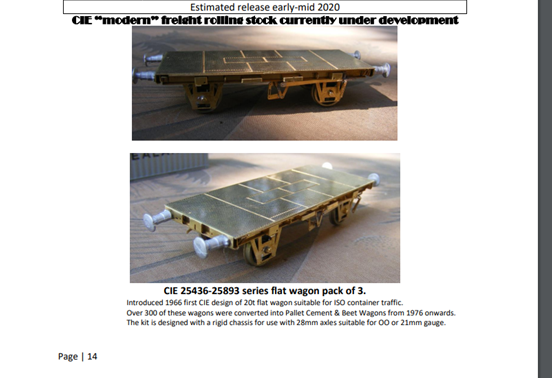
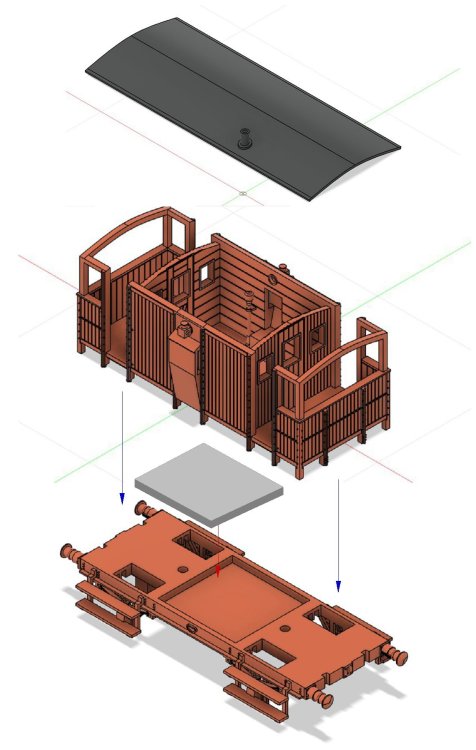
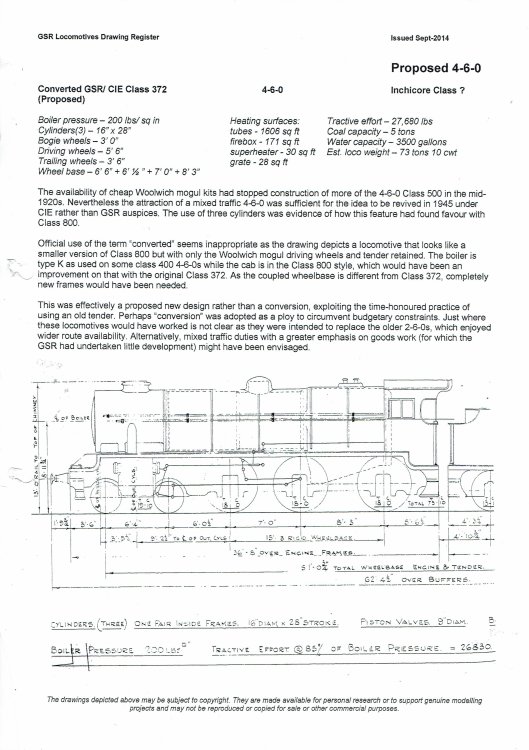
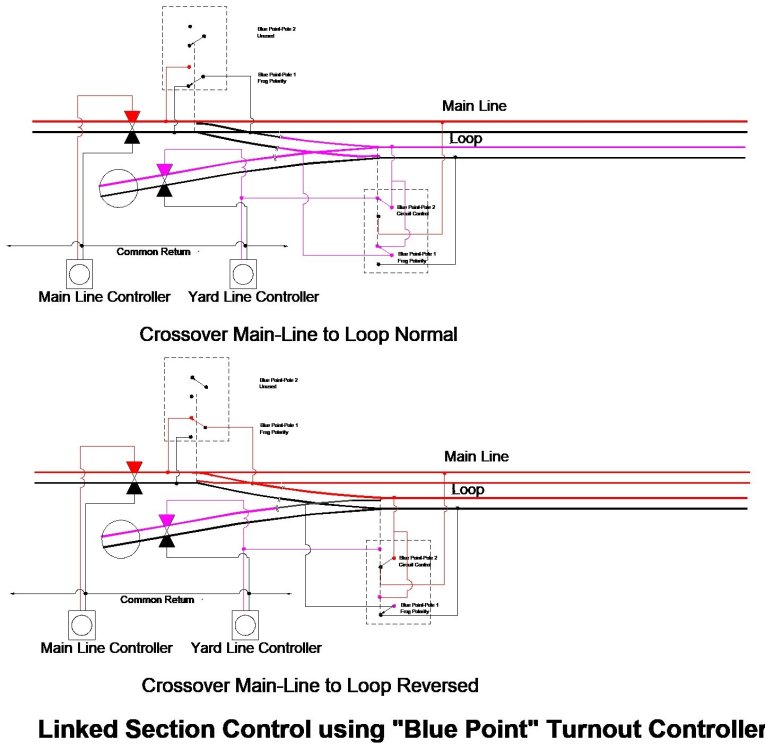
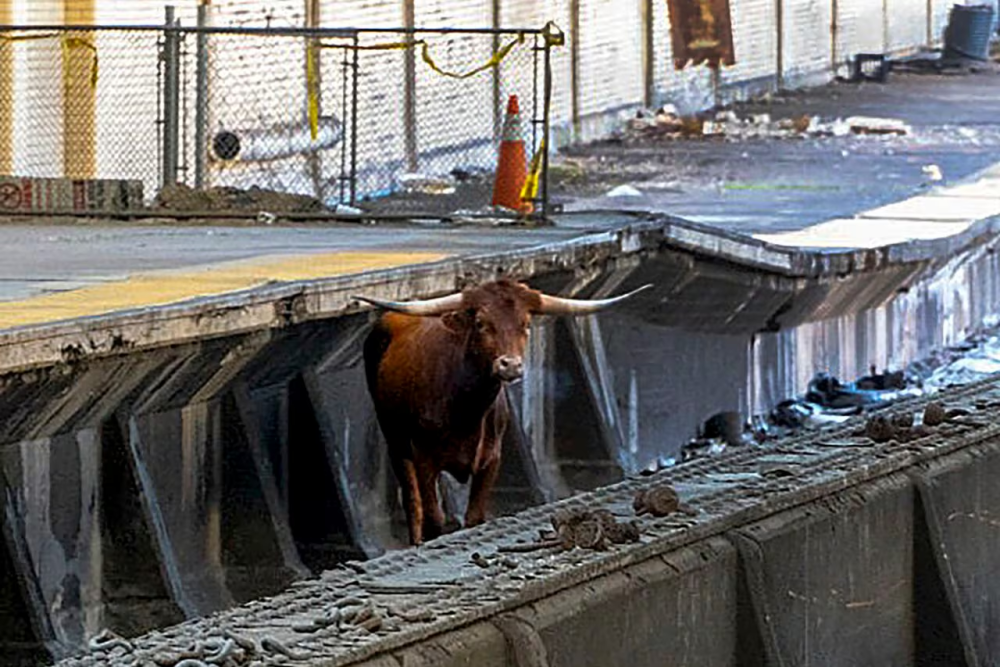
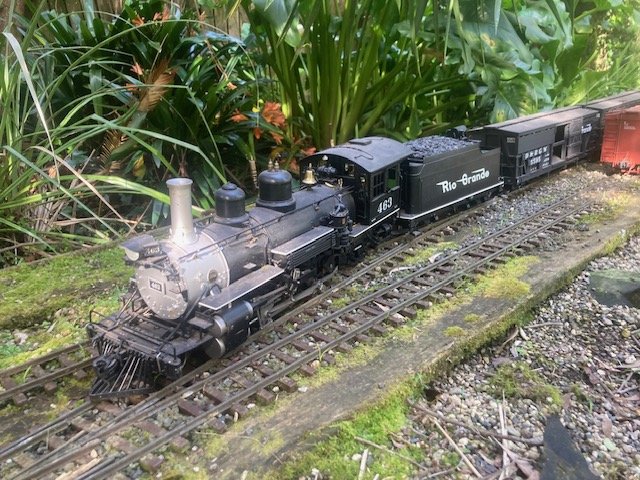
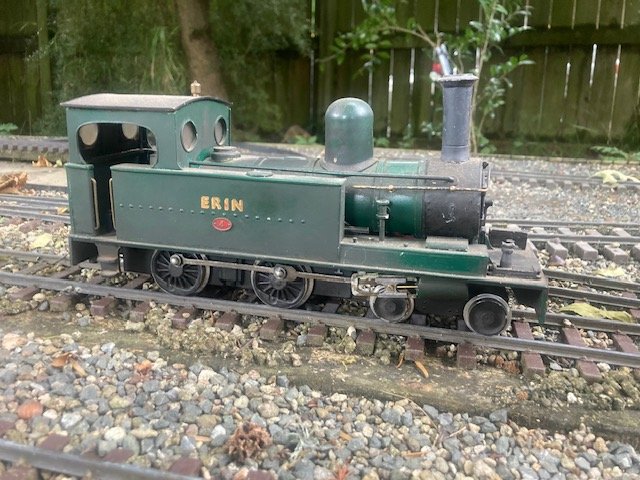
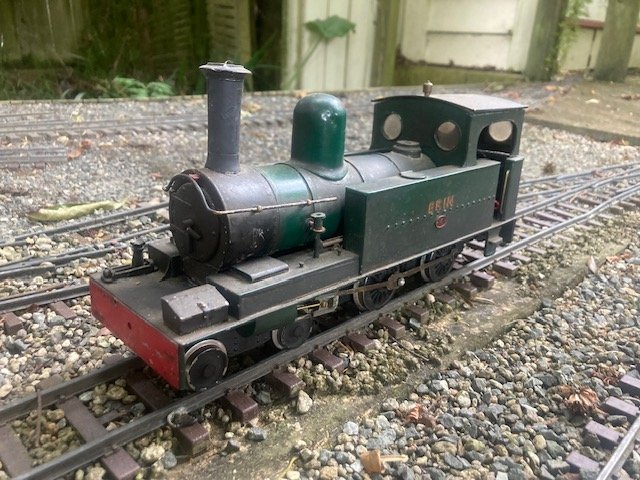
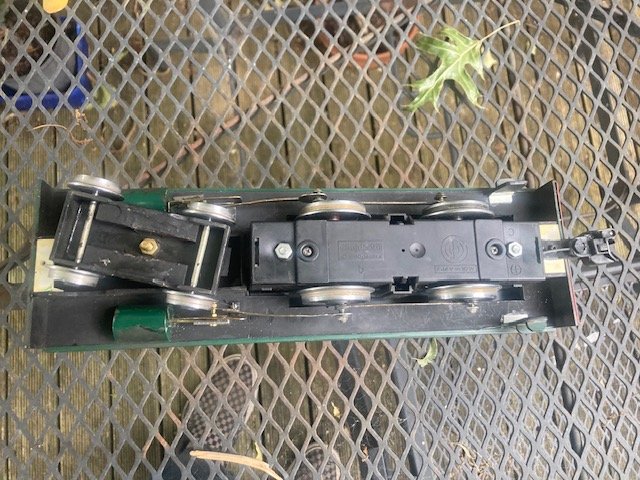
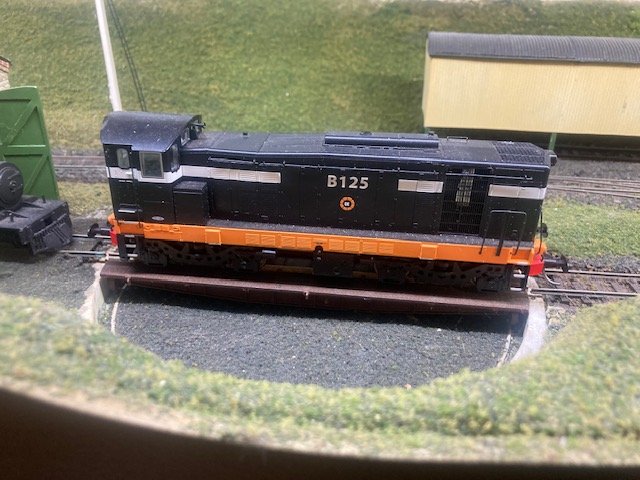
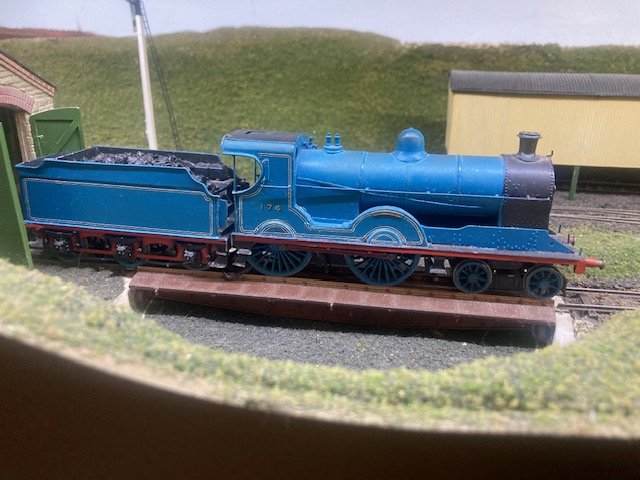
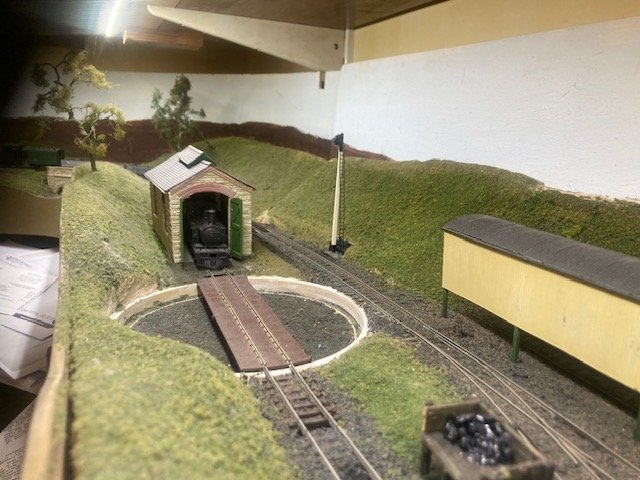
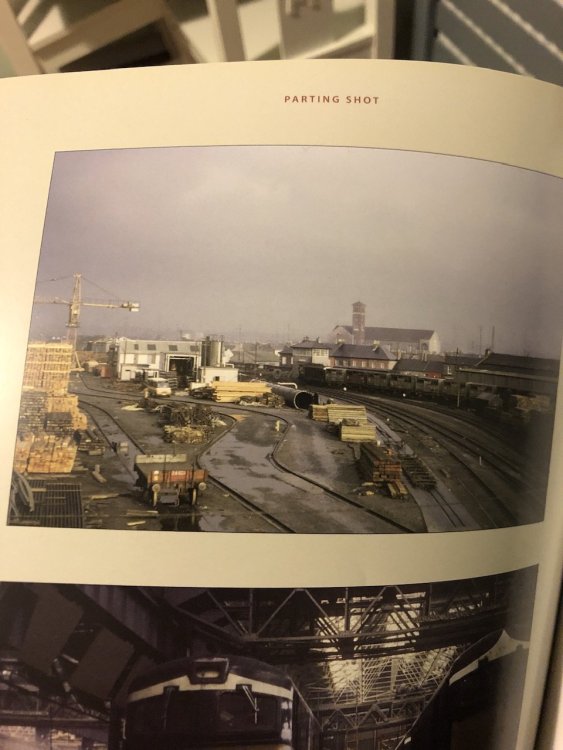
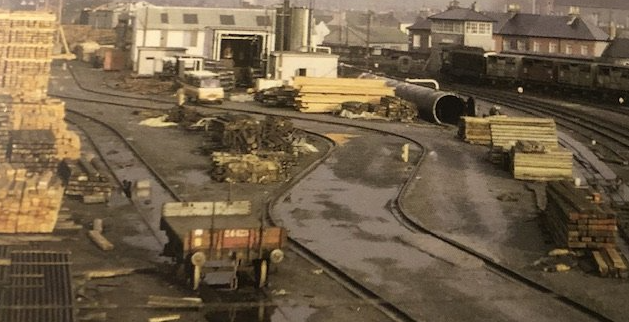
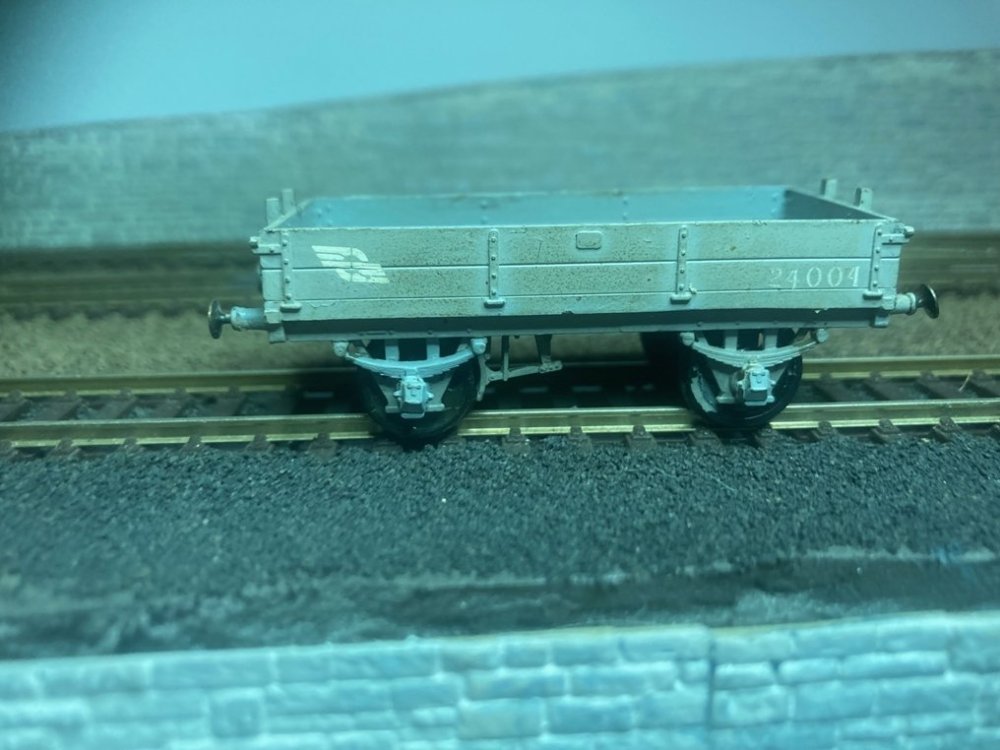
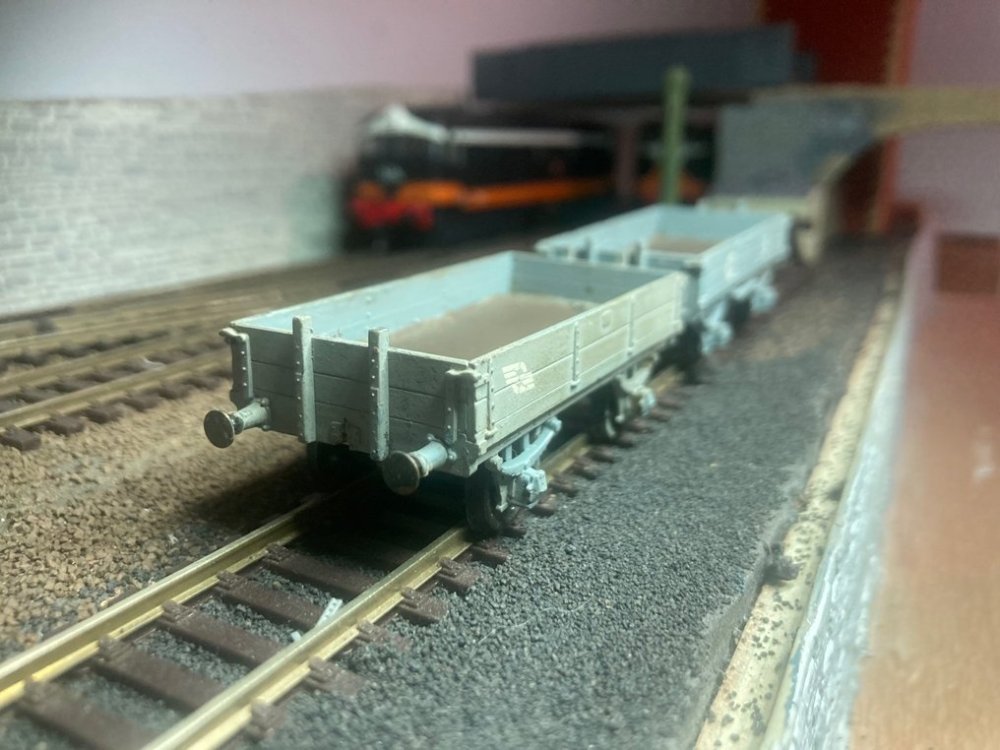
NIR and IR/IE Mark 2 Coaches Mega Update
in News
Posted
Fixed gantries for loading containers and 'Lancashire Flats" began to appear during the early 60s there appear to have been two type a light 5T gantry similar to that at Youghal https://www.thebeachguide.co.uk/photos/youghal-front-strand-3166144.htm and a more substantial 16T gantry used for handling container traffic at Dromad, Navan, Rathkeale, Roscrea, and the North Kerry Yard Tralee http://www.industrialheritageireland.info/Gazetteer/Images/Railways/DR03830.jpg .
A large dairy or meat factory would be a good source of container traffic, the gantries at Dromad, Rathkeale and Roscrea would have been installed to handle traffic from the nearby factories. CIE would have used its own Aluminium bodies containers on purpose built flat wagon (there is a Kevin A Murray photo of one of these containers on an early version of the CIE 20' Flat Wagon in the Wagon Collection on the IRRS Flickr site) 20T container wagons began to appear from the mid-1960s and ISO containers in the late 60s (68-69).
The gantry at Glenmore on Patricks Layout is a good example of a model of this type of gantry
Location of gantries could vary usually towards the middle of a siding, though the gantries at Roscrea were close to the buffer stops, usually on a siding with easy vehicle access like the siding a Dugort, though sometimes on a loading bank like Cleremorris or the North Kerry Yard.
Apart from a suitable source of traffic Gaeltacht Advance Factory or Fish Processing factory at Dugort, the main challenge is the absence of a model of the CIE Aluminium container and early CIE container flats, Leslie's skeletal container wagon and ISO containers are really only suitable for a post 1970s layout.